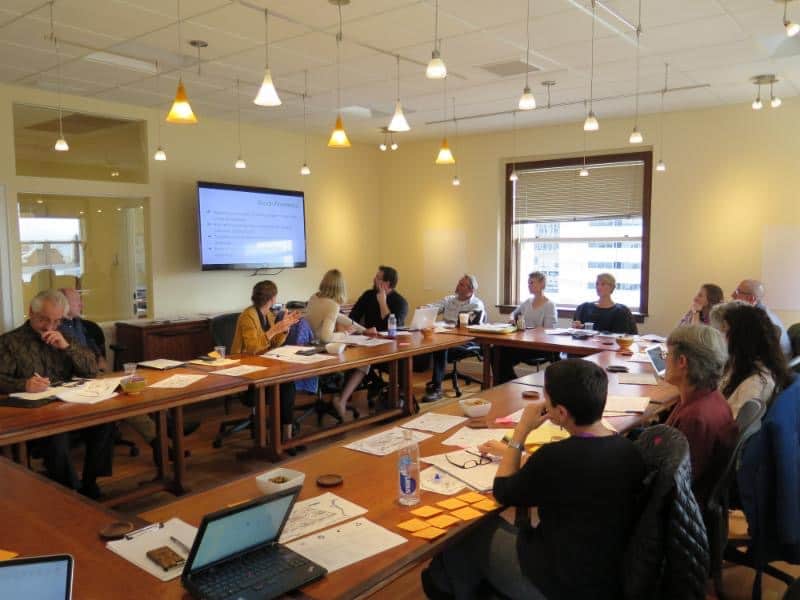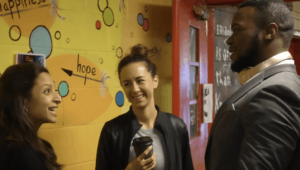ReSchool Tests A New Framework for Learning

The Donnell-Kay Foundation initiated ReSchool Colorado to “design and implement a new statewide public education system that pushes the boundaries of current thought and practice to provide an exceptional education for students living in this century, not the 20th century for which our current system was largely designed.” ReSchool director Amy Anderson detailed the vision here.
This month the ReSchool team pressure tested their competency-based framework with help from twenty educators and thought leaders. Using a draft of the competency-based framework and a learning profile that described a potential student in the system, participants explored expanded opportunities for powerful learning. Given our interest in personalized and competency-based learning powered by a learner profile, we found the lessons that emerged from this discussion worth sharing. They are presented below (and available here).
ReSchool Tests A New Framework for Learning
ReSchool Colorado Staff
This month we took our first stab at testing our assumptions around ReSchool’s competency-based framework, a key component of the new system. In collaboration with twenty educators from multiple learning organizations that could serve as potential providers within this new system, we facilitated a simulation to explore how we could do a better job of supporting and endorsing learning across a larger canvas of opportunities for Colorado students. Using a draft of the competency-based framework and a learning profile that described a potential student in the system, we turned it over to teams to develop a learning opportunity that would fit within both of these design parameters. Our goal was to learn how we can create the conditions for powerful learning to occur, and to sharpen what would make it both desirable and possible to experience a greater landscape of learning opportunity for both the student and those providing learning opportunities.
Lesson #1: The framework was the least of our worries
The framework we designed to test the right “grain size” of the competencies didn’t catch the providers’ attention in ways that we expected. We were exploring how specific the framework needed to be to inform quality learning experiences and empower multiple experiences to work in concert to support a variety of customized pathways. Designed around the four core domains of academic preparedness, discipline, social awareness and the ability to seek solutions, the framework didn’t raise tensions or concerns. This did, however, raise a number of questions for us on the design side of things. Was the framework, which included aliases of competencies so as not to get too bogged down in language, so broad that everyone could find entry? Do each of the providers already have clear enough student outcomes that the framework didn’t impact their work? And if so, how can we ensure these hold value in the new system without prescribing something different? In parallel with these questions about the needs for specificity, we recognized a greater need to identify solutions to ensure interoperability across learning experiences so students are informed as learners.
Lesson #2: The student made all the difference
Along with the competency framework, we provided a detailed profile of a potential learner. Not only did the profile include a dashboard that indicated where they were in relation to “on target” competency demonstration, it highlighted the student’s learning preferences, work habits, and a survey of developmental assets that are expected to help them become caring, responsible, and productive adults. In presenting the profile to the providers in the room, we were surprised by the number of questions the profile surfaced about the learner and how their efforts as learning providers would impact the student’s profile beyond the competencies. This raised important questions about the data that matters to different stakeholders, how dynamic the data needs to be, and what is the depth and type of information that can best inform optimal matching of learning opportunities with student needs and preferences to create the most efficient and effective learning.
Lesson #3: Learning providers are eager for feedback on quality and value
As part of the followup survey, we explored how learning providers would respond to an accreditation process that “authorized” them to offer opportunities within the new system. A high percentage of learning providers were comfortable with a process that required a clear definition of relevant outcomes, assessment validation, clear communication of levels of performance, an organizational articulation of a continuous improvement strategy and a level of transparency around monitoring and effective use of student, family and employer feedback. This first round of testing lifted important insights and clear next steps around the design of the learning framework. Thank you to the rock star team that represented the following learning organizations: Colorado State University OnlinePlus, Great Work, Inc, St. Vrain Community Montessori School, Boulder Dyslexia Therapy, History Colorado, Mosaic Collective, Institute of Play, University of Colorado Denver School of Education and Human Development, Facing History and Ourselves, Hive Denver, Denver Public Schools Imaginarium, Aurora Public Schools Innovation Hyper Lab, Principled Learning Strategies, and CompetencyWorks.
For more, see:




0 Comments
Leave a Comment
Your email address will not be published. All fields are required.